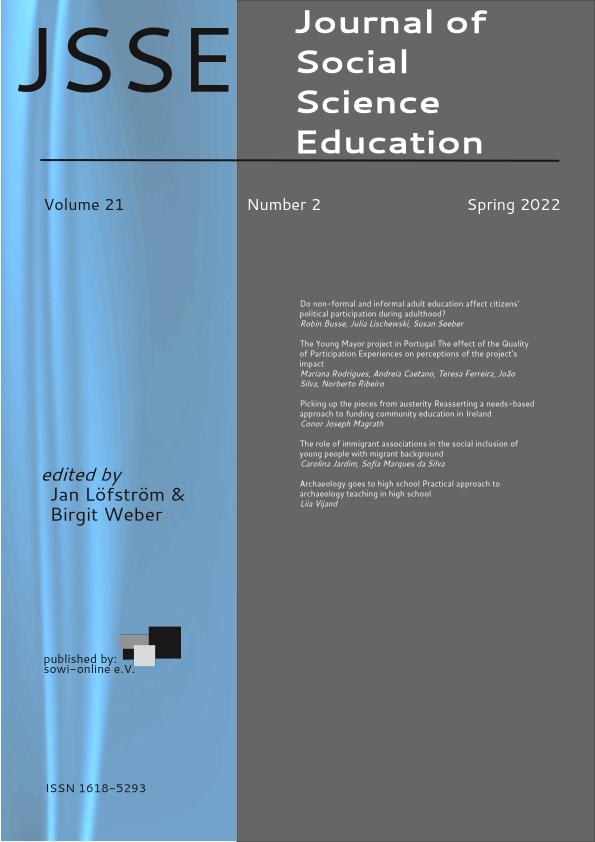Observing and interpreting quality in social science teaching
DOI:
https://doi.org/10.11576/jsse-4147Keywords:
social science subject didactics, social science teaching methodologies, quality of teaching, classroom observationAbstract
- Quality in social science teaching
- Social science subject didactics
- Social science teaching methodologies
- Form, content, and goal (intended function) of social science teaching
- Tool for observing and interpreting quality in social science teaching
Purpose: The purpose of the article is to contribute to a discussion about quality for social science teaching and in continuation hereof to develop a tool for social science classroom observation and interpretation, for both direct and video-based observation.
Design/methodology/approach: Classroom teaching is communication. Therefore, it is crucial that an analysis of quality of social science teaching includes a focus on communicative quality. The theoretical basis of the article is therefore threefold. 1) A Bakhtin-inspired communicative approach, 2) sociocultural ethnographic classroom research and 3) social science didactics / social science teaching discourse. Discourse is not only understood as language, but as language in context, which means that it’s not only communication as spoken words, utterances, but also communication as actions (doings) that count as disciplinary work.
Findings: It is concluded that communicative quality in social science teaching, and perhaps in teaching in general, can be observed as utterances in the classroom analysed for their coherence between form, content, and goal (intended function), which accordingly are the basic elements of an observation tool developed. When utterances are recurring and thus form patterns, they are called practices. The tool aims to keep focus on form, content, and goal (intended function) of the basic subject discourse, which functions as an underlying structuring of classroom communication. It is also concluded that the normative basis for social science teaching can be operationalized and thus serve as a guidance of interpretations of observations made in the classroom of the form and content of teaching.
Research limitations/implications. The tool is designed to focus specifically on social science quality. It is not a suggestion to disregard generic conditions in the teaching, and therefore the use of the tool presupposes that this is done in connection with a generic observational focus. The tool has not been tested on a large scale, and therefore it must be expected that it will have to be further developed during use.
Downloads
Published
How to Cite
Issue
Section
License
Copyright (c) 2022 JSSE - Journal of Social Science Education

This work is licensed under a Creative Commons Attribution-ShareAlike 4.0 International License.



